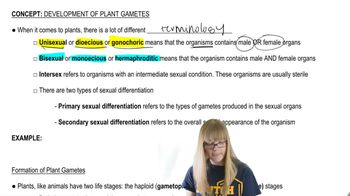Diseases and conditions on the RUSP list are tested on every newborn infant, and if the baby has one of the conditions, the parents are immediately informed. What kind of information and counseling should be provided to the parents along with the diagnosis?
Table of contents
- 1. Introduction to Genetics51m
- 2. Mendel's Laws of Inheritance3h 37m
- 3. Extensions to Mendelian Inheritance2h 41m
- 4. Genetic Mapping and Linkage2h 28m
- 5. Genetics of Bacteria and Viruses1h 21m
- 6. Chromosomal Variation1h 48m
- 7. DNA and Chromosome Structure56m
- 8. DNA Replication1h 10m
- 9. Mitosis and Meiosis1h 34m
- 10. Transcription1h 0m
- 11. Translation58m
- 12. Gene Regulation in Prokaryotes1h 19m
- 13. Gene Regulation in Eukaryotes44m
- 14. Genetic Control of Development44m
- 15. Genomes and Genomics1h 50m
- 16. Transposable Elements47m
- 17. Mutation, Repair, and Recombination1h 6m
- 18. Molecular Genetic Tools19m
- 19. Cancer Genetics29m
- 20. Quantitative Genetics1h 26m
- 21. Population Genetics50m
- 22. Evolutionary Genetics29m
15. Genomes and Genomics
Genomics and Human Medicine
Problem 11
Textbook Question
You have identified a gene encoding the protein involved in the rate-limiting step in vitamin E biosynthesis. How would you create a transgenic plant producing large quantities of vitamin E in its seeds?
 Verified step by step guidance
Verified step by step guidance1
Identify the gene responsible for the rate-limiting step in vitamin E biosynthesis. This involves isolating the gene sequence and confirming its role through functional studies, such as gene knockout or overexpression experiments.
Clone the identified gene into a suitable plant expression vector. Ensure the vector contains a strong seed-specific promoter to drive high expression of the gene in the seeds. Additionally, include a selectable marker gene for identifying transformed plants.
Introduce the recombinant vector into the plant genome using a transformation method such as Agrobacterium-mediated transformation or biolistic (gene gun) transformation. Select the transformed plants using the selectable marker.
Screen the transgenic plants for successful integration and expression of the gene. Use molecular techniques such as PCR to confirm gene integration and RT-PCR or qPCR to measure gene expression levels in the seeds.
Analyze the vitamin E content in the seeds of the transgenic plants using biochemical assays such as high-performance liquid chromatography (HPLC). Select the plants with the highest vitamin E production for further propagation and study.
 Verified video answer for a similar problem:
Verified video answer for a similar problem:This video solution was recommended by our tutors as helpful for the problem above
Video duration:
2mPlay a video:
Was this helpful?
Key Concepts
Here are the essential concepts you must grasp in order to answer the question correctly.
Transgenic Plants
Transgenic plants are genetically modified organisms that have had foreign genes inserted into their genome. This process typically involves techniques such as Agrobacterium-mediated transformation or biolistic methods. By introducing specific genes, such as those involved in vitamin E biosynthesis, researchers can enhance the plant's ability to produce desired compounds, like increased levels of vitamin E in seeds.
Recommended video:
Guided course

Plant Gamete Terminology
Gene Expression Regulation
Gene expression regulation refers to the mechanisms that control the timing and amount of gene product produced in a cell. In the context of creating a transgenic plant, it is crucial to ensure that the introduced gene is expressed at the right levels and in the appropriate tissues, such as seeds. This can involve using specific promoters that drive expression in seed tissues to maximize vitamin E production.
Recommended video:
Guided course

Penetrance and Expressivity
Metabolic Pathways
Metabolic pathways are series of chemical reactions occurring within a cell that lead to the synthesis or breakdown of substances. Understanding the metabolic pathway for vitamin E biosynthesis is essential for identifying the rate-limiting steps and potential targets for genetic modification. By manipulating these pathways, scientists can enhance the accumulation of vitamin E in the seeds of transgenic plants.
Recommended video:
Guided course

Repair Pathways

 6:51m
6:51mWatch next
Master Human Genome Composition with a bite sized video explanation from Kylia
Start learningRelated Videos
Related Practice
Textbook Question
479
views
